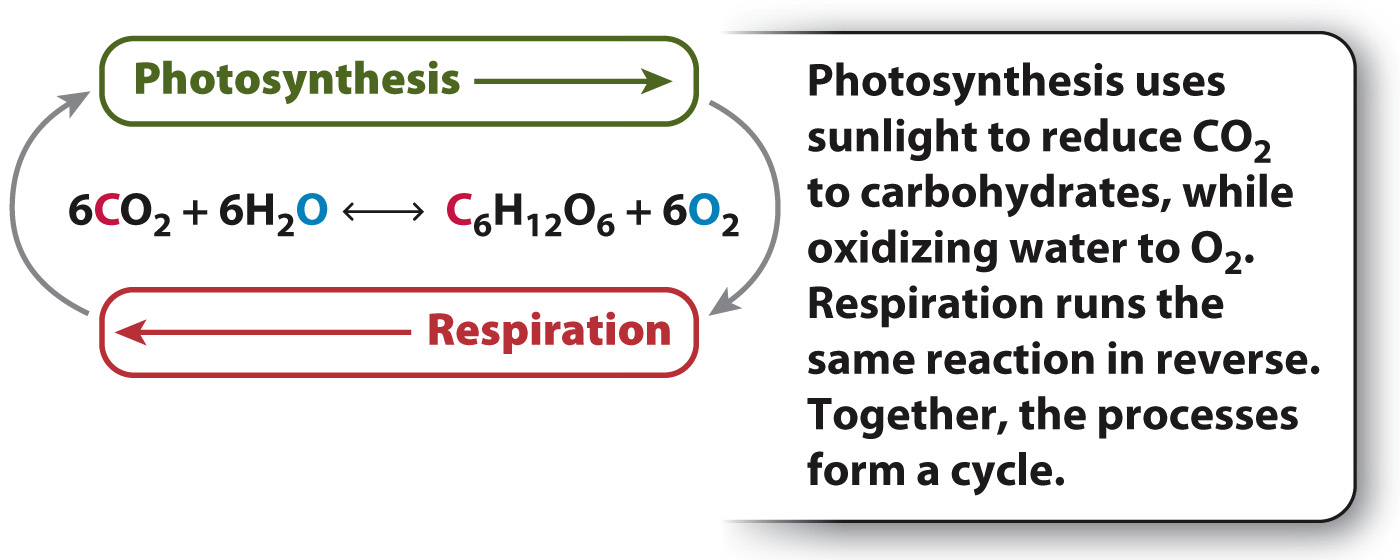Photosynthesis and respiration are key processes in short-term carbon cycling.
To grow, all organisms require both carbon and energy. As we saw in Chapter 8, photosynthetic organisms use energy from the sun to form ATP and NADPH, which reduce CO2 to carbohydrates. As photosynthesis pulls CO2 out of the atmosphere (or water, for aquatic organisms), the carbon is transferred to carbohydrates, and oxygen is given off as a by-
6CO2 + 6H2O → C6H12O6 + 6O2
It is estimated that photosynthetic organisms remove about 210 billion metric tons of carbon (in nearly 770 billion metric tons of CO2) from the atmosphere each year, about 60% of it by land plants and the rest by phytoplankton and seaweeds in the oceans. This annual photosynthetic removal of CO2 equals about 25% of the total CO2 in the atmosphere. In the absence of processes that restore CO2 to the atmosphere, high rates of photosynthesis would use up the atmospheric reservoir of CO2 in just a few years. But the Keeling curve tells us that atmospheric CO2 is not decreasing rapidly—
What processes return CO2 to the atmosphere, balancing photosynthetic removal? In Chapter 7, we discussed aerobic respiration. Humans and many other organisms gain both the energy and carbon needed for growth from organic molecules (that is, by consuming food). As explained in Chapter 7, aerobic respiration uses oxygen to oxidize organic molecules to CO2, converting chemical energy in the organic compounds to ATP for use in cellular processes. Aerobic respiration can be summarized by this chemical equation:
C6H12O6 + 6O2 → 6CO2 + 6H2O
Plants respire, too, converting the chemical energy in carbohydrates into useful work. On the present-
As we discussed in Chapter 8, the equations for oxygenic photosynthesis and aerobic respiration mirror each other. Photosynthesis continually converts CO2 to organic molecules, using energy from the sun, and respiration harvests the chemical energy stored in organic molecules, releasing CO2 and water in the process. Photosynthesis and aerobic respiration are complementary metabolic pathways: Each uses the products of the other and generates a new supply of substrates for its complement. The result is a cycle (Fig. 25.2).
